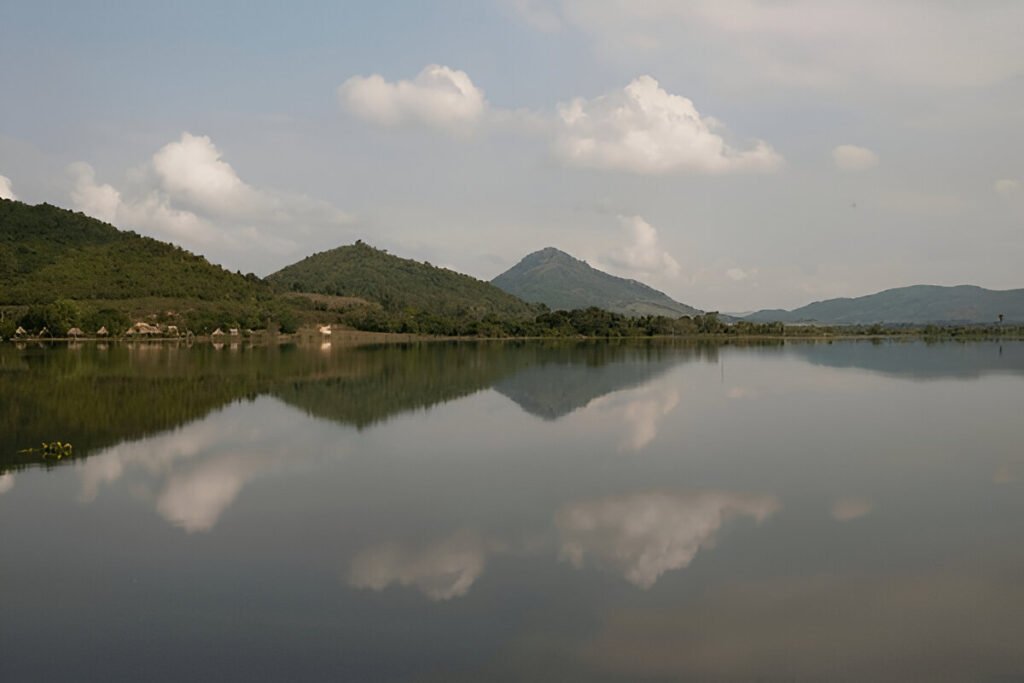Introduction:
Nestled in the heart of a serene mountainous region in Hakone, Japan, sits an enchanting fusion of art and nature: Hakone Open-Air Museum. Offering a unique blend of outdoor sculptures and natural beauty, this premier outdoor gallery is a must-see destination for art enthusiasts and nature lovers alike. Established in 1969 as Japan’s first open-air museum, it has a rich history of presenting global and national contemporary art in the midst of Mother Nature’s stunning backdrop.
Exploring the Splendid Fusion of Art and Nature at Hakone Open-Air Museum
Walking through the Hakone Open-Air Museum feels like entering a different world—a world where art and nature coexist in beautiful harmony. The museum stretches over a 70,000 square meter park, dotted with over a thousand sculptures and art installations from Japanese and international artists. Each piece is strategically placed, creating a visually stunning dialogue with the surrounding nature. The verdant trees, colourful flowers, and murmuring water features all contribute to the museum’s tranquil ambiance, enhancing the artistic experience.
The museum also exhibits the aesthetic power of structure through the Picasso Pavilion, an indoor gallery dedicated to one of the world’s most celebrated artists, Pablo Picasso. This three-story building is home to over 300 of Picasso’s ceramic and bronze sculptures, paintings, and tapestries. The glass structure allows the natural light to illuminate the artwork, further merging art with the outside world. The symbiotic relationship between art and nature in Hakone Open-Air Museum is a testament to the Japanese philosophy of harmonious living with nature.
Delving into Japan’s Premier Outdoor Gallery: A Journey through Hakone Museum’s Masterpieces
The Hakone Open-Air Museum’s masterpieces are not confined to the works exhibited; the museum itself is a masterpiece of architectural brilliance. Among the museum’s most popular installations is the Symphonic Sculpture. This towering, multicolored stained glass tower offers an immersive experience that combines art, architecture, and panoramic views. Visitors can climb the spiral staircase within the tower to discover a kaleidoscope of colors and a breathtaking view of the Hakone mountains.
Another must-see masterpiece is the Footbath, a hot spring foot bath filled with natural hot spring water from the Hakone area. The bath is surrounded by a mosaic wall of Hakone’s flowers and birds, creating a relaxing environment where visitors can soak their feet while appreciating the beautiful artwork. Hakone Open-Air Museum offers an engaging and dynamic experience, allowing visitors to interact with art in unconventional and inspiring ways.
Description of the Attraction:
The Hakone Open-Air Museum is a groundbreaking attraction that embraces the Japanese ethos of harmonizing art and nature. By presenting a plethora of sculptures in an open-air setting, it allows visitors to appreciate art within a natural landscape, creating a unique aesthetic experience. The museum captures the essence of the local culture and traditions, showcasing the Japanese passion for art and their deep reverence for nature. It also reflects the evolution of contemporary art in Japan and around the world.
Things to Do:
Visitors can immerse themselves in the beauty of the museum by participating in various activities. Exploring the expansive outdoor gallery, visiting the Picasso Pavilion, and climbing the Symphonic Sculpture are just a few of the opportunities to engage with the art. The museum also offers workshops where visitors can create their own art using various materials. And after a day of exploration, visitors can relax in the Footbath, a perfect culmination to a day of aesthetic enrichment.
Local Tips:
The best time to visit Hakone Open-Air Museum is during spring and autumn when the weather is mild and the foliage enhances the natural beauty of the museum. Comfortable walking shoes are recommended due to the extensive walking pathways. Don’t forget to bring a camera to capture the beautiful sculptures and picturesque views.
How to Get There:
The museum can be reached by train from Tokyo, with a scenic ride on the Hakone Tozan Line to Chokoku No Mori Station, which is just a short walk from the museum. It takes approximately 2 hours to reach the museum from Tokyo.
Nearby Attractions:
Nearby attractions include the Lake Ashi, Hakone Shrine, and Hakone Tozan Cable Car, all offering unique experiences of Hakone’s natural and cultural beauty.
Conclusion:
The Hakone Open-Air Museum offers an unforgettable journey into the fusion of art and nature. Its unique approach to showcasing art, coupled with the stunning natural setting, creates a serene and spiritually enriching experience. Whether you are an art enthusiast or a nature lover, this premier outdoor gallery offers an enriching and inspiring experience that will leave an indelible mark on your heart. So, embark on this journey of art and nature, and let the Hakone Open-Air Museum inspire your senses.






